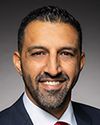It would be impossible for us to have the financial capacity to do this on our own, so we reached out to the federal government for suggestions on how we could achieve this. We were referred to the Canada Infrastructure Bank. Our transit department was really excited about this. They view this as a necessity if we want to hit our emissions reduction targets.
I would note that this allows us to purchase 450 zero-emission buses. We've already started with the first 10. I should flag that the only hiccup that we have in this right now is the charging infrastructure. Right now, we have a plan to purchase the buses, and we're in the process of trying to work out funding for the new charging capacity at our new transit terminal. Other than that, it is full steam ahead on what will be transformational for our transit system.
As I said before in my initial comments, I believe this is the way every municipal transit department in Canada is going to go, but when you're changing how you do transit, the initial costs are challenging. Twenty years from now maybe it will be a very different picture, but I think the cost initially when you have a transformation like this, when every municipal transit department is historically dependent on diesel buses, it's a big change.
This was a necessity. I would just note that there is no way we could have done this without the support of the federal government.



